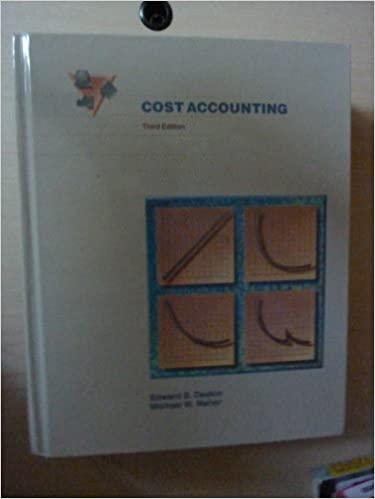Standard Costs and Prorating VariancesMultipleChoice: A Company used a traditional standard cost system in accounting for the
Question:
Standard Costs and Prorating Variances—MultipleChoice: A Company used a traditional standard cost system in accounting for the cost of production of its only product, product A. The standards for the production of one unit of product A are as follows:

There were no inventories on hand on July l . Following is a summary of costs and related data for the production of product A during the month ended July 31:

On July 31, there are 22,000 feet of item 1; 4,000 feet of item 2; and 2,000 completed units of product A on hand. All direct materials purchases and transfers are debited at standard.
Required:
Choose the best answers (or indicate "none of the above"):
a. For the month ended July 31, the total debits to the Direct Materials Inventory account for the purchase of item 1 would be:
(1) $75,000. (2) $78,000. (3) $58,500. (4) $60,000.
b. For the month ended July 3 1 , the total debits to the Work in Process account for direct labor would be:
(1) $496,000. (2) $465,000. (3) $480,000. (4) $512,000.
c. Before prorating variances, the balance in the Material Efficiency Variance account for item 2 was:
(1) $1,000 credit. (2) $2,600 debit. (3) $600 debit. (4) $2,000 debit.
d. If all variances were prorated to Inventories and Cost of Goods Sold, the amount of material efficiency variance for item 2 to be prorated to Raw Materials Inventory would be:
(1) $0. (2) $333 credit. (3) $333 debit. (4) $500 debit.
e. If all variances were prorated to Inventories and Cost of Goods Sold, the amount of material price variance for item 1 to be prorated to Raw Materials Inventory would be:
(1) $0. (2) $647 debit. (3) $600 debit. (4) $660 debit.
Step by Step Answer:






